Interview with Mr Gunnar Hemmer / Dilo Group – Sales Director
By : Behnam Ghasemi / Kohan Textile Journal
The most recent machine concepts from DiloGroup companies DiloTemafa, DiloSpinnbau and DiloMachines were promoted during Hightex 2022 in Istanbul with the emphasis on new equipment components which improve product quality, increase line capacity and also enable new opportunities in nonwoven production.
KTJ: How do you evaluate Hightex exhibition?
Mr Gunnar Hemmer: Hightex is an important exhibition in the MENA Region and for Nonwoven machinery manufacturers like Dilo and also for Nonwoven final products and raw material providers it is a good opportunity to meet customers.
We are here to present our latest machinery, technologies and solutions for our Turkish customers and other customers from the whole region. Fortunately, after several years of restrictions and limited access to the market now we have personal meetings again and enjoy a positive atmosphere in the events and exhibitions.
KTJ: Let us know more about latest innovations and technologies that Dilo presents during the show.
Mr Gunnar Hemmer: DiloTemafa offers opening and blending equipment for synthetic and natural fibres and machines for the extraction of natural fibres and their cleaning. High fibre throughput and highest blending precision.
Temafa has new designs and features in bale opening systems. DiloTemafa introduces the improved bale opener series “Baltromix Pro” with design features for the operating assistance with the I4.0 components “Bale Timer”, cleaning control, better accessibility for maintenance and the “DI-LOWATT” system for energy savings in fibre transport.
The transport of fibres and the exhaust air consumes most of the energy needed in nonwoven production lines. Therefore, energy-efficient planning of the line is important. A reduction of the changes in direction of the airflow drastically reduces drops in pressure. The design department of DiloTemafa takes care of this task. We have developed the DI-LOWATT system to adapt the flow speed in the tubes to the fibre throughput. The use of speed-controlled fans considerably reduces the energy consumption for fibre transport.
This is something which is really important for the textile industry as the cost of energy and raw materials increased a lot. In recent years global attention to sustainability and green products are increasing day by day.
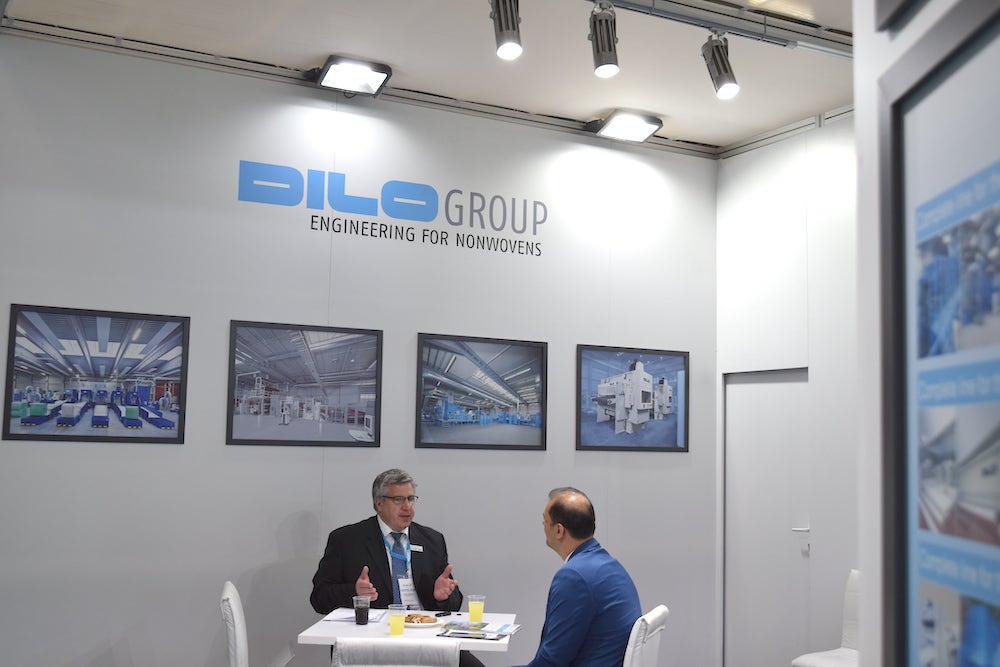
DILO Spinnbau as a member of the DiloGroup supplies the web-forming components of complete production lines for all nonwoven fabric Technologies with staple fibre.
DiloSpinnbau introduce a new “Unifeed” card feeder (VRS-P) during Hightex , which combines the principle of volumetric charged feeding with the characteristics of a chute feeder but without the conventional overhead trunk which allows for lower ceiling height requirement. The fibre flock matt is condensed by a vacuum delivery apron to give better uniformity of mass distribution. The distribution over the working width is controlled by additional flaps. This feeder can be adapted for medium/fine, coarse/medium or long staple fibres.
At the same time, we introduce our latest card technology “VectorQuadroCard” which has a modular transfer group between breast and main section, with new characteristics and the latest standards, like extremely fast production, high accessibility for maintenance and cleaning.
This means that we have the possibility to modify the card from highest production to highest quality within few hours just by changing the intermediate section because the downtime in production is the most expensive thing for manufacturers.
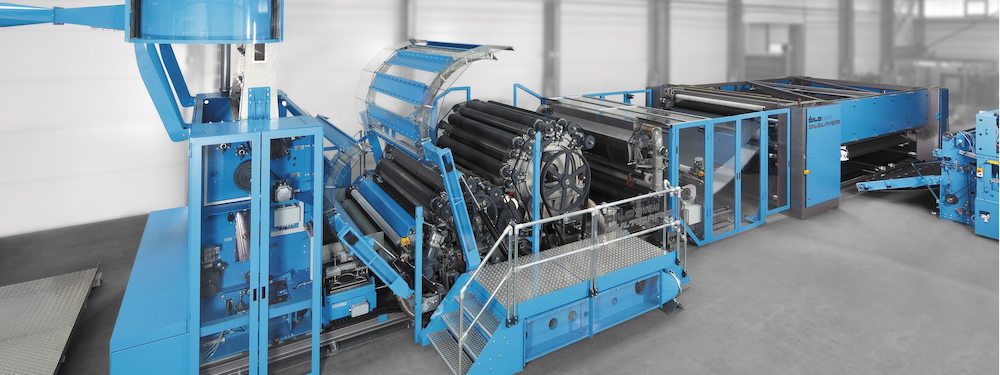
The revised HyperLayer NT offered by DiloMachines presents the latest state-of-the-art high-speed precision layering technique setting new standards which play an important role, especially in hydroentanglement lines.
In this application, it is important to achieve infeed speeds up to 160 m/minute using sophisticated viscose fibres and a layering width of about 4 m while at the same time having a high layering precision in the cross and longitudinal directions.
KTJ: Dilo Group is a leader company in the production of sustainable textile machinery with special attention to energy consumption, tell us more about Dilo Sustainability policy.
Mr Gunnar Hemmer: Dilo Group has been doing this for many years, just as an example since 2007 for our cross-lapper technologies, we have not used normal gearboxes and motors but torque motors. With torque motors, we have the possibility to use it as a generator and refeed energy into the system.
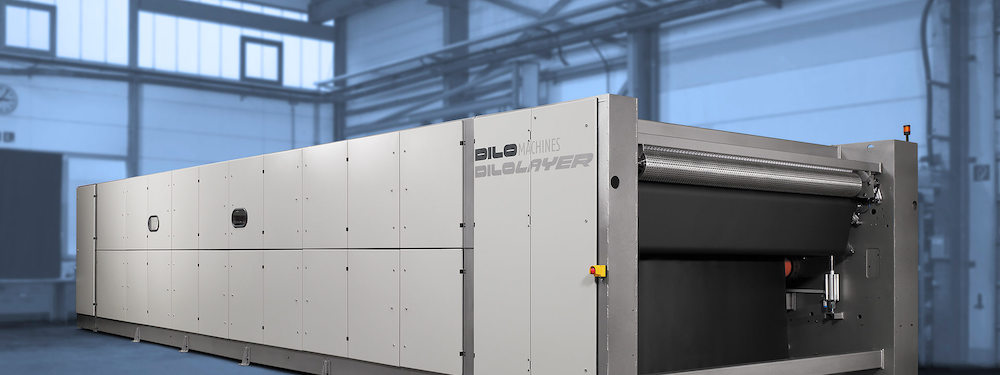
Another development that we are working on it is intense needling, it means that we have a very high density of needles for the production of products between 30 to 100 grams and to “replace” it for water entanglement processes. In this way, we can save energy for high-pressure water pumps and dry the layer but water entanglement always will be a very important principle for Nonwoven production.
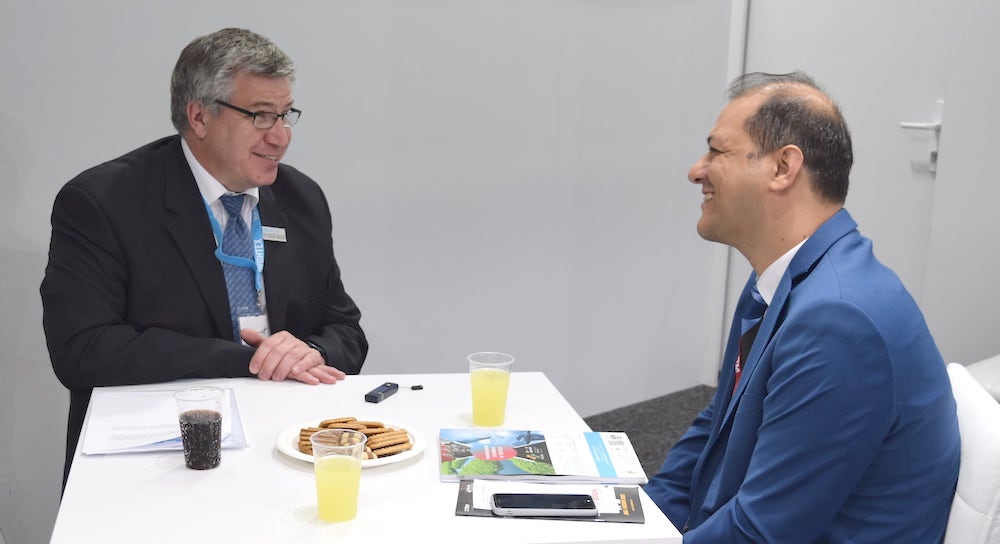
Another innovation by Dilo, 3D-Lofter is a great choice for reducing fiber consumption especially when we need a layer with different thicknesses in edges or special areas.
The 3D-Lofter is an aerodynamic web-forming machine, which distributes additional fibres 3-dimensionally on a flat needlefelt, resulting in locally varying thickness, strength and stiffness. This 3D web-forming technology can also be used for products in upholstery, mattress, apparel and shoe applications and for floor coverings with coloured patterning.
Especially when producing formed needlefelt parts for automotive interior linings, the moulding process and also the physical demands of the part require base material with a topologically distributed fibre mass.
To meet this requirement, additional fibres are distributed 3-dimensionally on a flat needlefelt, resulting in locally varying thickness, strength and stiffness. A geometric reference point for marking the position of the topological design has to be set. Clocked or “offline” die cutting and moulding take care of this topological fibre mass distribution reference point, according to the requirements of the finished product.
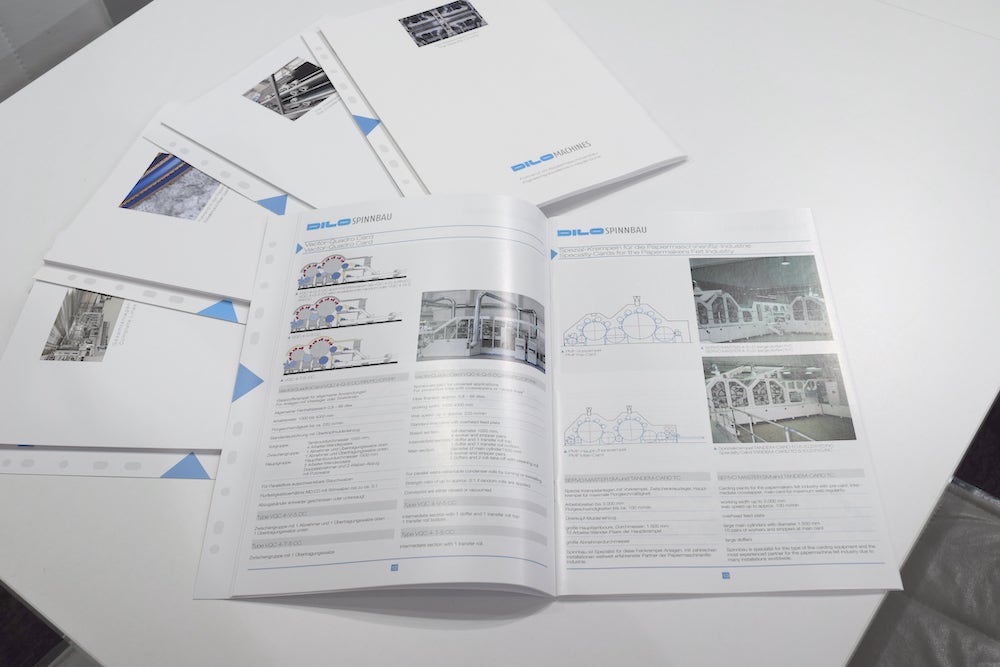
The saving may amount to approx. 30 % of the total fibre mass. The basis of this technology is a flat needlefelt with high evenness which provides the basic strength. Only the additionally required amounts of fibre are dosed by individual webforming units. Subsequently, the additional fibre mass which varies in thickness over the felt plane in cross and running directions is compacted and consolidated, preferably by needling and/or thermofusion.
The series of adjacent individual webforming units in cross direction can also form an aerodynamic web which can be used without a carrier felt, depending on the desired precision in placing the amounts of fibre.
This 3D web forming technology can also be used for products in upholstery, mattress, apparel and shoe applications and for floor coverings with coloured patterning.

KTJ: Where is your main destination for export machinery in the MEA region?
Mr Gunnar Hemmer: If we consider Turkey as part of the Middle East definitely Turkey is our biggest market and we have many customers in Turkey. Also, we have some projects in North Africa and Egypt, Iran can be a market but it is not possible to work because of sanctions and the political situation.
KTJ: What do you think about the consumption rate of Nonwoven products in the MEA Region?
Mr Gunnar Hemmer: Nonwoven products like wipes, diapers but also needled felts are getting more popular day by day and for sure it is an increasing trend in the MENA region as well. Unfortunately, the global situation is not the best right now but the manufacturers in the region always do and invest despite high energy costs or supply chain problems and it can be a chance for access to high-quality end products everywhere.



















